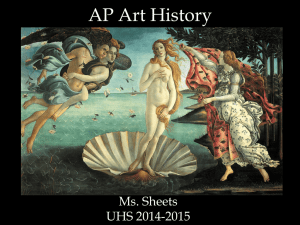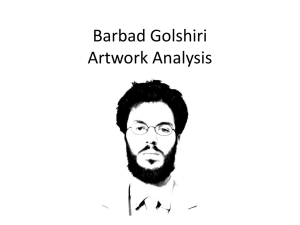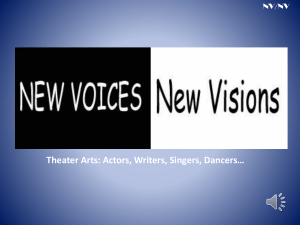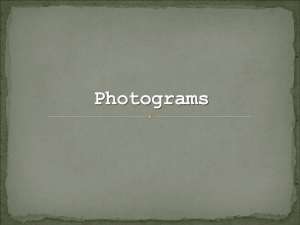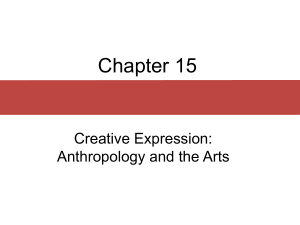Minnesota Academic Standards in the Arts – Music – Grades K-3
advertisement
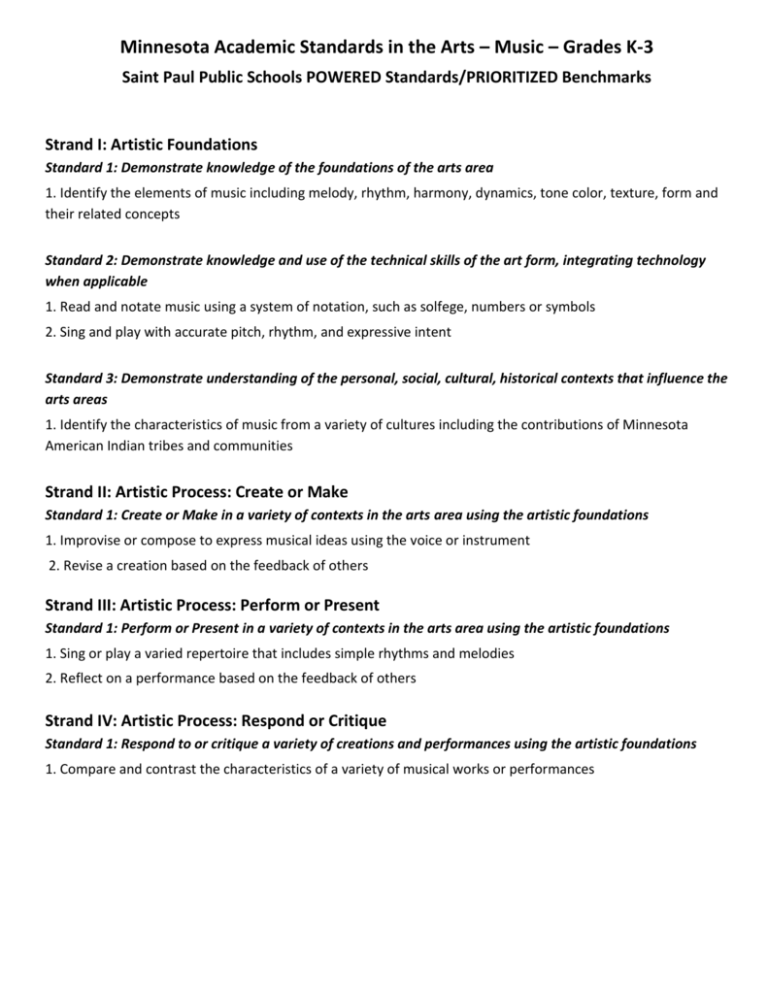
Minnesota Academic Standards in the Arts – Music – Grades K-3 Saint Paul Public Schools POWERED Standards/PRIORITIZED Benchmarks Strand I: Artistic Foundations Standard 1: Demonstrate knowledge of the foundations of the arts area 1. Identify the elements of music including melody, rhythm, harmony, dynamics, tone color, texture, form and their related concepts Standard 2: Demonstrate knowledge and use of the technical skills of the art form, integrating technology when applicable 1. Read and notate music using a system of notation, such as solfege, numbers or symbols 2. Sing and play with accurate pitch, rhythm, and expressive intent Standard 3: Demonstrate understanding of the personal, social, cultural, historical contexts that influence the arts areas 1. Identify the characteristics of music from a variety of cultures including the contributions of Minnesota American Indian tribes and communities Strand II: Artistic Process: Create or Make Standard 1: Create or Make in a variety of contexts in the arts area using the artistic foundations 1. Improvise or compose to express musical ideas using the voice or instrument 2. Revise a creation based on the feedback of others Strand III: Artistic Process: Perform or Present Standard 1: Perform or Present in a variety of contexts in the arts area using the artistic foundations 1. Sing or play a varied repertoire that includes simple rhythms and melodies 2. Reflect on a performance based on the feedback of others Strand IV: Artistic Process: Respond or Critique Standard 1: Respond to or critique a variety of creations and performances using the artistic foundations 1. Compare and contrast the characteristics of a variety of musical works or performances Minnesota Academic Standards in the Arts – Music – Grades 4-5 Saint Paul Public Schools POWERED Standards/PRIORITIZED Benchmarks Strand I: Artistic Foundations Standard 1: Demonstrate knowledge of the foundations of the arts area 1. Describe the elements of music including melody, rhythm, harmony, dynamics, tone color, texture, form and their related concepts 2. Describe how the elements and related concepts such as pitch, tempo, canon, and ABA are used in the performance, creation or response to music 3. Identify the characteristics of a variety of genres and musical styles, such as march, taiko, mariachi, and classical Standard 2: Demonstrate knowledge and use of the technical skills of the art form, integrating technology when applicable 1. Read and notate music using the standard notation such as quarter, half, and eighth notes and rests, the lines and spaces of the treble clef, and time signatures 2. Sing and play alone and in a group demonstrating proper posture, breathing, technique, age appropriate tone quality and expressive intent Standard 3: Demonstrate understanding of the personal, social, cultural, historical contexts that influence the arts areas 1. Describe the cultural and historical traditions of music including the contributions of Minnesota American Indian tribes and communities 2. Describe how music communicates meaning Strand II: Artistic Process: Create or Make Standard 1: Create or Make in a variety of contexts in the arts area using the artistic foundations 1. Improvise and compose rhythms, melodies, and accompaniments using voice or instruments to express a specific musical idea 2. Revise creative work based on feedback of others and self-reflection Strand III: Artistic Process: Perform or Present Standard 1: Perform or Present in a variety of contexts in the arts area using the artistic foundations 1. Sing alone and in groups such as rounds and part songs or play instruments alone or in a group 2. Revise performance based on feedback of others and self-reflection Strand IV: Artistic Process: Respond or Critique Standard 1: Respond to or critique a variety of creations and performances using the artistic foundations 1. Justify personal interpretations and reactions to a variety of musical works or performances Minnesota Academic Standards in the Arts – Music – Grades 6-8 Saint Paul Public Schools POWERED Standards/PRIORITIZED Benchmarks Strand I: Artistic Foundations Standard 1: Demonstrate knowledge of the foundations of the arts area 1. Analyze the elements of music including melody, rhythm, harmony, dynamics, tone color, texture, form and their related concepts 2. Analyze how the elements and related concepts such as articulation, major/minor and fugue are used in the performance, creation or response to music 3. Describe the characteristics of a variety of genres and musical styles, such as electronic, jazz, opera and gamelan Standard 2: Demonstrate knowledge and use of the technical skills of the art form, integrating technology when applicable 1. Read and notate music using the standard notation system such as dotted rhythms, clefs, mixed meters and multipart scores with or without the use of notation software 2. Sing alone and in a group (two and three part harmony) using musical expression such as phrasing, dynamic contrast, technique, balance and accurate articulation OR play an instrument alone and in a group using music expression such as phrasing, dynamic contrast, technique, balance, and accurate articulation Standard 3: Demonstrate understanding of the personal, social, cultural, historical contexts that influence the arts areas 1. Compare and contrast connections among works in music, their purpose, and the personal, cultural and historical contexts, including the contributions of Minnesota American Indian tribes and communities 2. Analyze the meanings and functions of music Strand II: Artistic Process: Create or Make Standard 1: Create or make in a variety of contexts in the arts area using the artistic foundations 1. Improvise, compose or arrange a new musical composition using available technology to preserve the creation 2. Revise a musical composition, improvisation or arrangement based on feedback of others, self-reflection and artistic intention 3. Develop an artistic statement, including how audience and occasion influence creative choices Strand III: Artistic Process: Perform or Present Standard 1: Perform or present in a variety of contexts in the arts area using the artistic foundations 1. Rehearse and perform music from a variety of contexts and styles alone or within small or large groups 2. Revise performance based on feedback of others, self-reflection and artistic intention 3. Develop an artistic intent, including how audience and occasion impact performance choices Strand IV: Artistic Process: Respond or Critique Standard 1: Respond to or critique a variety of creations and performances using the artistic foundations 1. Analyze and interpret a variety of musical works and performances using established criteria Minnesota Academic Standards in the Arts – Music – Grades 9 – 12 Saint Paul Public Schools POWERED Standards/PRIORITIZED Benchmarks Strand I: Artistic Foundations Standard 1: Demonstrate knowledge of the foundations of the arts area 1. Analyze how the elements of music including melody, rhythm, harmony, dynamics, tone color, texture, form and their related concepts are combined to communicate meanings in the creation of, performance of or response to music 2. Evaluate how the elements of music and related concepts, such as repetition, pattern, balance, and emphasis are used in the creation of, performance of, or response to music 3. Analyze how the characteristics of a variety of genres and styles contribute to the creation of, performance of, or response to music 4. Apply understanding of the health and safety issues related to creating, performing, and responding in music Standard 2: Demonstrate knowledge and use of the technical skills of the art form, integrating technology when applicable 1. Read and notate music using the standard notation system such as complex meters, extended ranges and expressive symbols with and without the use of notation software in a variety of styles and contexts 2. Sing a variety of music alone and in small and large groups (multi-part) using characteristic tone, technique and expression OR play a variety of music on an instrument alone and in small and large groups using characteristic tone, technique and expression 3. Use electronic musical tools to record, mix, playback, accompany, arrange or compose music. Standard 3: Demonstrate understanding of the personal, social, cultural, historical contexts that influence the arts areas 1. Analyze how the personal, social, cultural and historical contexts influence the creation, interpretation or performance of music including the contributions of Minnesota American Indian tribes and communities 2. Synthesize and express an individual view of the meanings and functions of music Strand II: Artistic Process: Create or Make Standard 1: Create or make in a variety of contexts in the arts area using the artistic foundations 1. Improvise, compose or arrange new musical compositions in a variety of styles and contexts using available technology to preserve the creations 2. Revise a musical composition or arrangement based on artistic intent using multiple sources of critique and feedback 3. Justify an artistic statement, including how audience and occasion influence creative choices Strand III: Artistic Process: Perform or Present Standard 1: Perform or present in a variety of contexts in the arts area using the artistic foundations 1. Rehearse and perform an existing single, complex work, or multiple works of music from a variety of contexts and styles alone and within small and large groups 2. Revise performance based on artistic intent using multiple sources of critique and feedback 3. Justify artistic intent, including how audience and occasion influence performance choices Strand IV: Artistic Process: Respond or Critique Standard 1: Respond to or critique a variety of creations and performances using the artistic foundations 1. Analyze, interpret and evaluate a variety of musical works or performances applying self-selected criteria within the traditions of the art form 2. Justify the choice of self-selected criteria based on knowledge of how the criteria affects criticism
